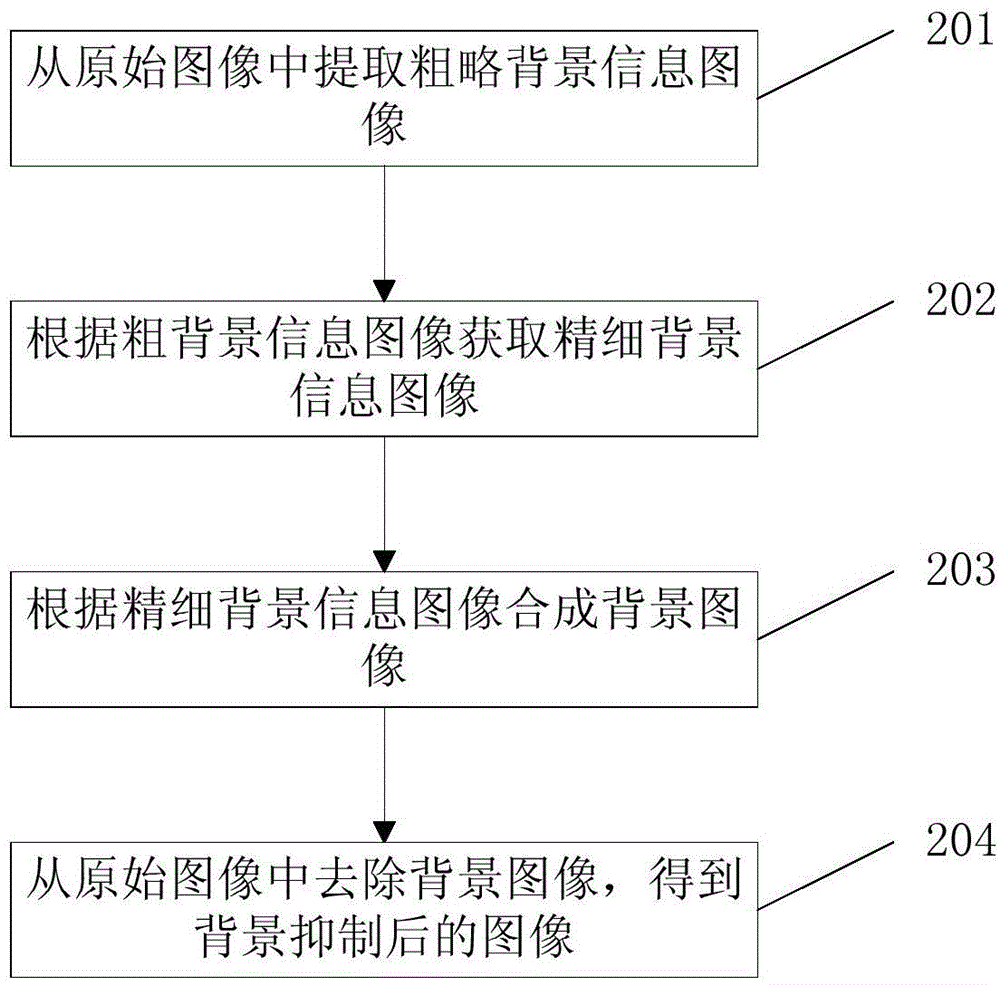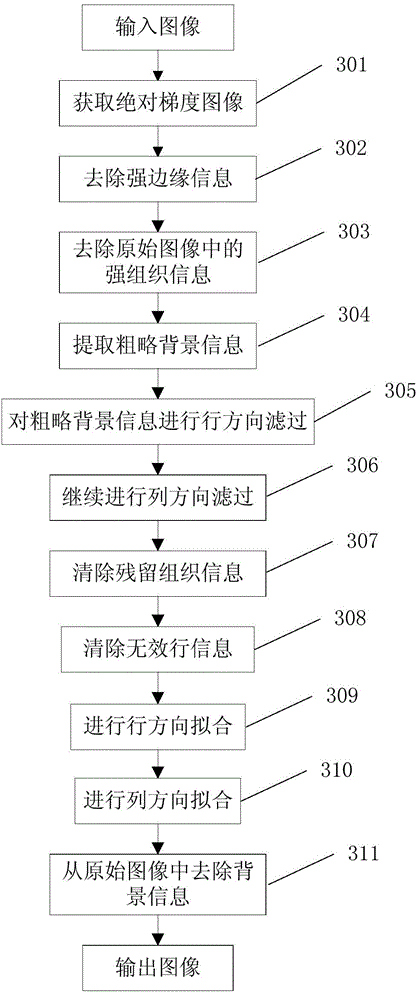Small part X ray image background suppression method and device thereof
A background suppression and line image technology, applied in image enhancement, image data processing, instruments, etc., can solve the problems of loss of soft tissue information, incomplete background suppression, and uneven background intensity, achieve good suppression effect, increase display proportion, Effects that improve image quality
- Summary
- Abstract
- Description
- Claims
- Application Information
AI Technical Summary
Problems solved by technology
Method used
Image
Examples
Embodiment Construction
[0073] The present invention will be further described in detail below in conjunction with the accompanying drawings and embodiments.
[0074] At present, X-ray equipment generates X-rays by bombarding the anode target (usually a tungsten target) with high-speed electrons emitted by the cathode filament in the bulb. X-rays are not generated on the surface of the anode target, but are produced by its atoms inside the anode target. interaction with high-speed electrons. The path that X-rays take when they emerge from the inside of the anode target varies according to their exit angle, such as figure 1 As shown, this effect is the heel effect. According to the Lambert-Beer theorem I=I 0 e -μl , that is, in the case of the same material attenuation coefficient, the intensity of the ray is inversely proportional to the index of the path length of the ray in the material, so the intensity of the X-ray emitted from the anode target gradually decreases along the direction of the hi...
PUM
 Login to View More
Login to View More Abstract
Description
Claims
Application Information
 Login to View More
Login to View More - R&D
- Intellectual Property
- Life Sciences
- Materials
- Tech Scout
- Unparalleled Data Quality
- Higher Quality Content
- 60% Fewer Hallucinations
Browse by: Latest US Patents, China's latest patents, Technical Efficacy Thesaurus, Application Domain, Technology Topic, Popular Technical Reports.
© 2025 PatSnap. All rights reserved.Legal|Privacy policy|Modern Slavery Act Transparency Statement|Sitemap|About US| Contact US: help@patsnap.com



